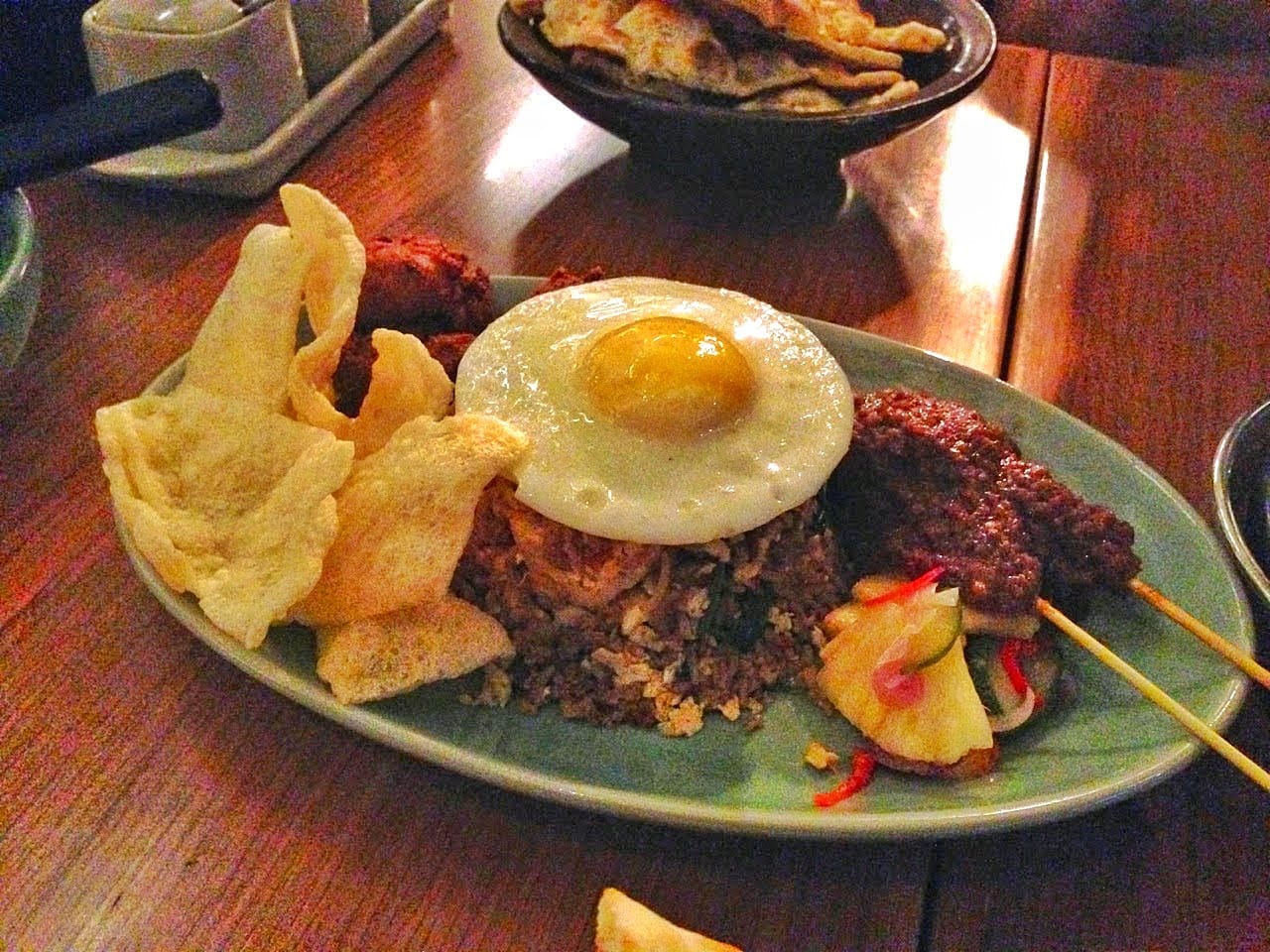
From Chinese Fried Rice to Indonesia’s Own Fried Rice.
All throughout Asia, rice is eaten with all meals. Like with Malaysian nasi lemak, Indonesian nasi goreng is considered the country’s national dish. Learn the nasi goreng history, how it was first made in the country, and what makes it uniquely Indonesian.
Nasi Goreng History: Chinese Influenced, Indonesian Ingredients
Nasi goreng translates to “fried rice” as that is exactly the dish. Indonesia’s famous fried rice has roots back to when Southern Chinese first arrived in the country for trade and immigration in the 10th century.
The Chinese preferred hot food and not to waste food. That meant the white rice from the night before was cooked for breakfast the next morning using their technique of stir-frying in a wok.
The reason the rice had to be cooked was that this was long before the refrigerator was invented. So if the rice was not heated up, it would soon spoil.
Prior to this method of recooking leftovers, Indonesians would sundry the leftover rice into rice crackers and then grind up the crisps into rice flour.
While the techniques are Chinese, the key flavors to nasi goreng are completely Indonesian as the star components are shrimp paste and kecap manis, the sweet soy sauce sweetened with the local palm sugar, which existed since the 2nd century.
What’s in a Nasi Goreng
Nasi goreng starts with the leftover white rice. It has to be leftover because freshly cooked rice is too moist whereas day-old rice dried up to make the perfect consistency for fried rice.
The most basic version sautés oil with shallots, garlic, and chili. Leftover bits of chicken, beef, prawn, or dried fish are added, then the rice. Finally, the dish is seasoned with shrimp paste and the Indonesian sweet soy sauce, or kecap manis.
There is no specific set of ingredients as nasi goreng is completely flexible. Basically, it’s fried rice that you can make out of whatever leftovers you may have. Often, a fried egg is added for more protein and to make it a complete meal.
As this is a leftovers meal, nasi goreng is most commonly eaten for breakfast. However, today, you can eat it at any time of day from five-star hotel breakfasts to late-night street food stalls.
Sign up for my newsletter on the sidebar for blog updates and my travel insider tips! And, check out my vlogs on YouTube!


